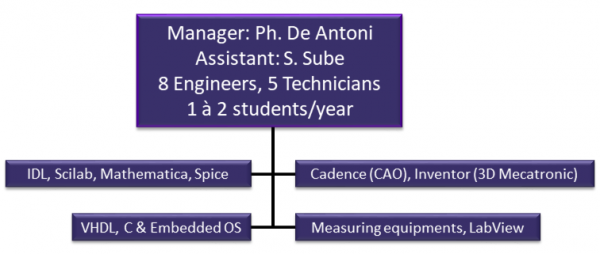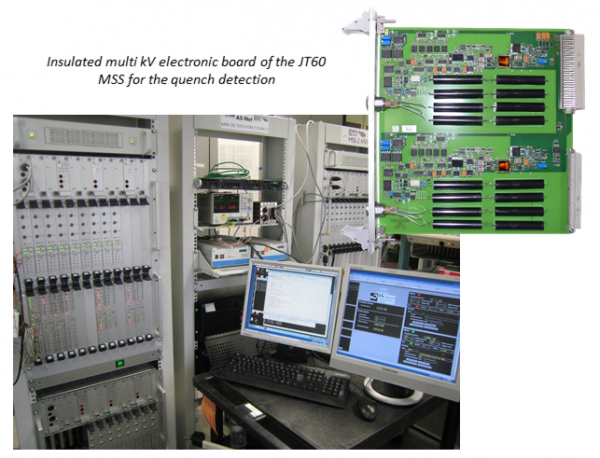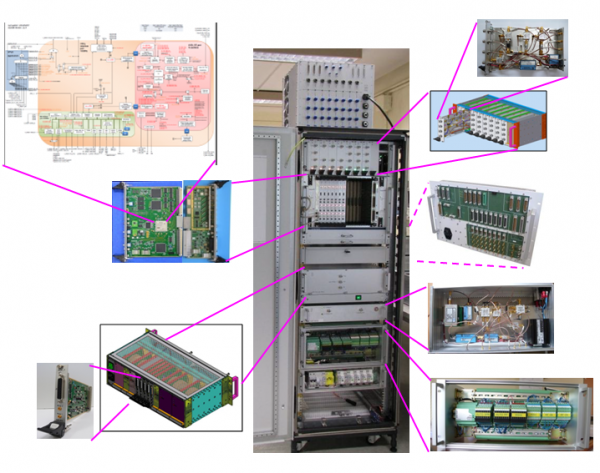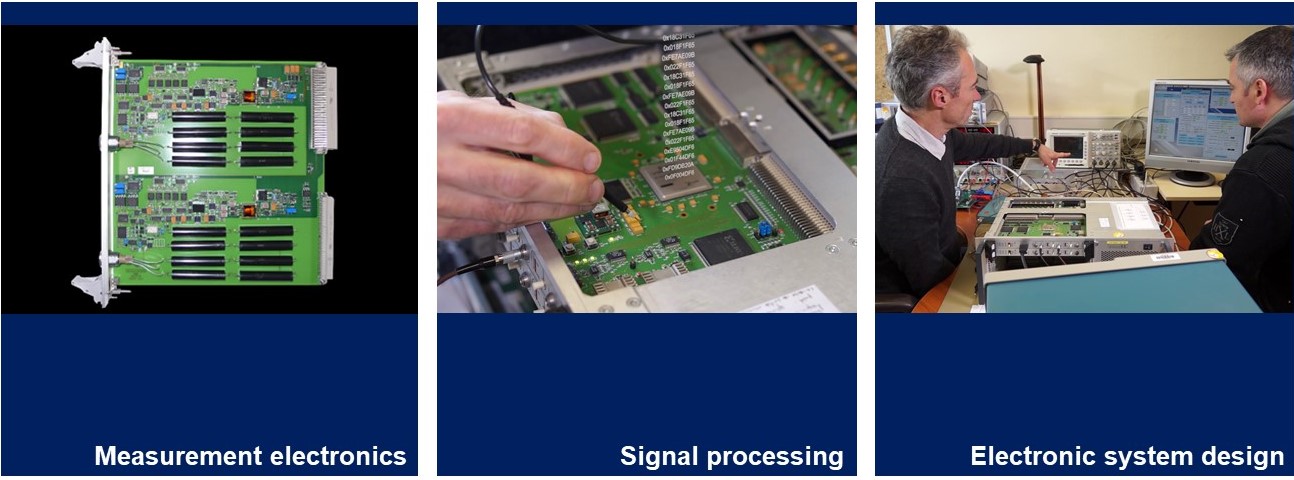
The instrumental electronics laboratory is in charge of developing electronic systems to measure, control or secure equipment for research in physics.
LEI is structured to respond to the different stages of an electronic project, within the framework of international research work:
- Pre-project phase with feasibility and cost studies to assess the viability of future devices.
- Specifications and architectures to define the assemblies to be developed
- Design of electronic devices.
- Subcontracting of realizations, integration, tests and recipes.
- Installation and development on site in France or abroad.
Main activities :
- Design of analog and digital electronic devices and boards composed by:
- Specific equipments developed according to scientific needs.
- Commercial equipment for parts meeting industrial standards.
- Design of digital systems based on FPGA (Field Programmable Gate Array) mixing:
- Logic.
- Microprocessors with or without operating systems.
- Signal processing functions.
- Programming is done in VHDL and C or LabView languages (RT and FPGA)
- Study and realization of systems for the protection of superconducting magnets (Magnetic Safety System - MSS) for magnet test stations or physics experiments.
- An R&D program is underway to use FPGA components.
- Mechanical design applied to the packaging of electronic assemblies, 3D placement/routing study.
Examples of achievements
Magnet Safety System (MSS)
LEI is a laboratory specialized in the design of MSS for the protection of superconducting magnets.
Here is a brief history of the most recent designs:
- 1999: Realization of a 1st generation MSS for the W7X coil testing station.
- 200x: Development of the 2nd generation of MSS for the test stations of the ISEULT project, the T2K accelerator arc of the J-PARC project installed on the KEK accelerator in Japan and the R3B magnet of the FAIR experiment (DESY-Germany).
Today, the developments of the latest generation MSS are characterized by specifications whose requirements are increasing. The MSS for the ISEULT medical MRI magnet requires 4 kV insulation and a high level of reliability to ensure operational safety. The MSS for the JT60SA test station is also isolated at several kV, and is a generic system that can be used for different types of magnets, such as the LNCMI high field magnet. It integrates the Muscade remote supervision tools also deployed on the installations.
Tomorrow, the MSS will be digital and will integrate FPGA-based equipment. For example, future projects such as the STAARQ test station or the MadMax magnet will use:
- An MSS consisting of an analog front end isolated at several kV to digitize the signals
- a CompactRIO chassis from National Instruments for the digital processing detecting the quench.
Spiral 2 LLRF
LEI carried out the Low level RF (LLRF) of the 33 cavities of Linac Spiral 2 located in Ganil in Caen. The machine frequency is 88.0525 MHz. The main objective is to regulate the amplitude and phase of accelerator fields in cavities with an accuracy of ± 1% and ± 0.5°.
For each cavity, the core of the system is based on two VME64x format cards:
- A digital board including a Virtex 5 FPGA for intensive calculations such as the field regulation in a cavity
- An analog card performing analog RF processing such as the analog/digital conversions with a jitter of less than 1 pS.
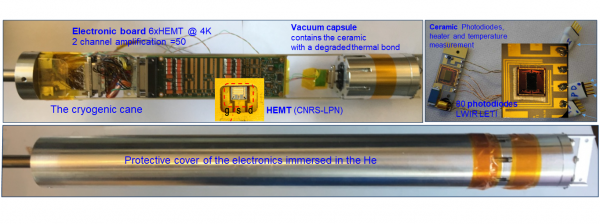
ESA-LWIR & ESA-ALFA project - Design of a cold preamplifier operating at 4K for reading calibrated photodiodes.
Cold Electronics
In collaboration with DEDIP and DAP, DIS studies and manufactures cooled amplification chains based on HEMT transistors (CNRS - LPN), for reading photodiode, Ge detectors or applications requiring very low noise measurement at very low temperatures (~1K).

